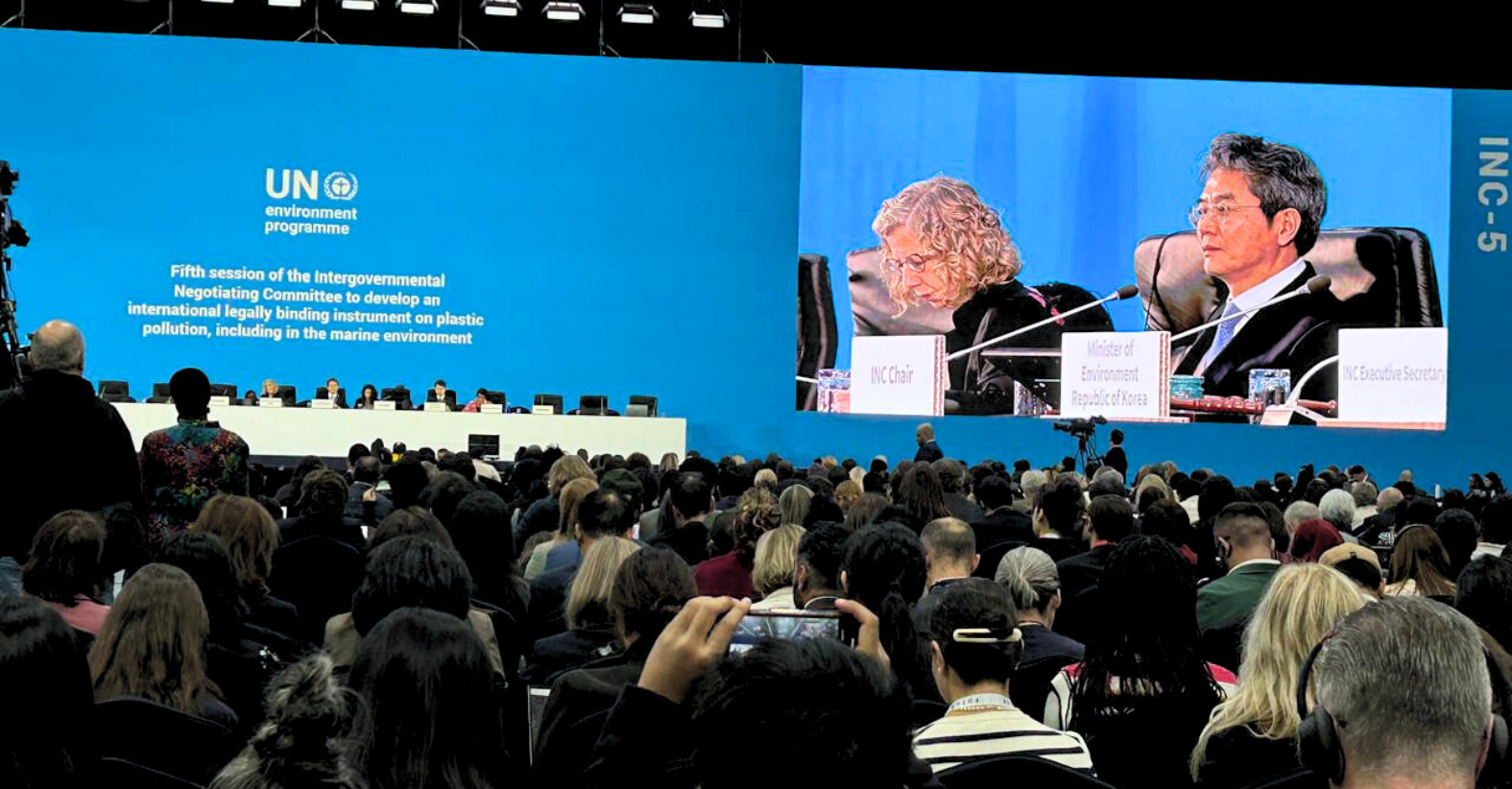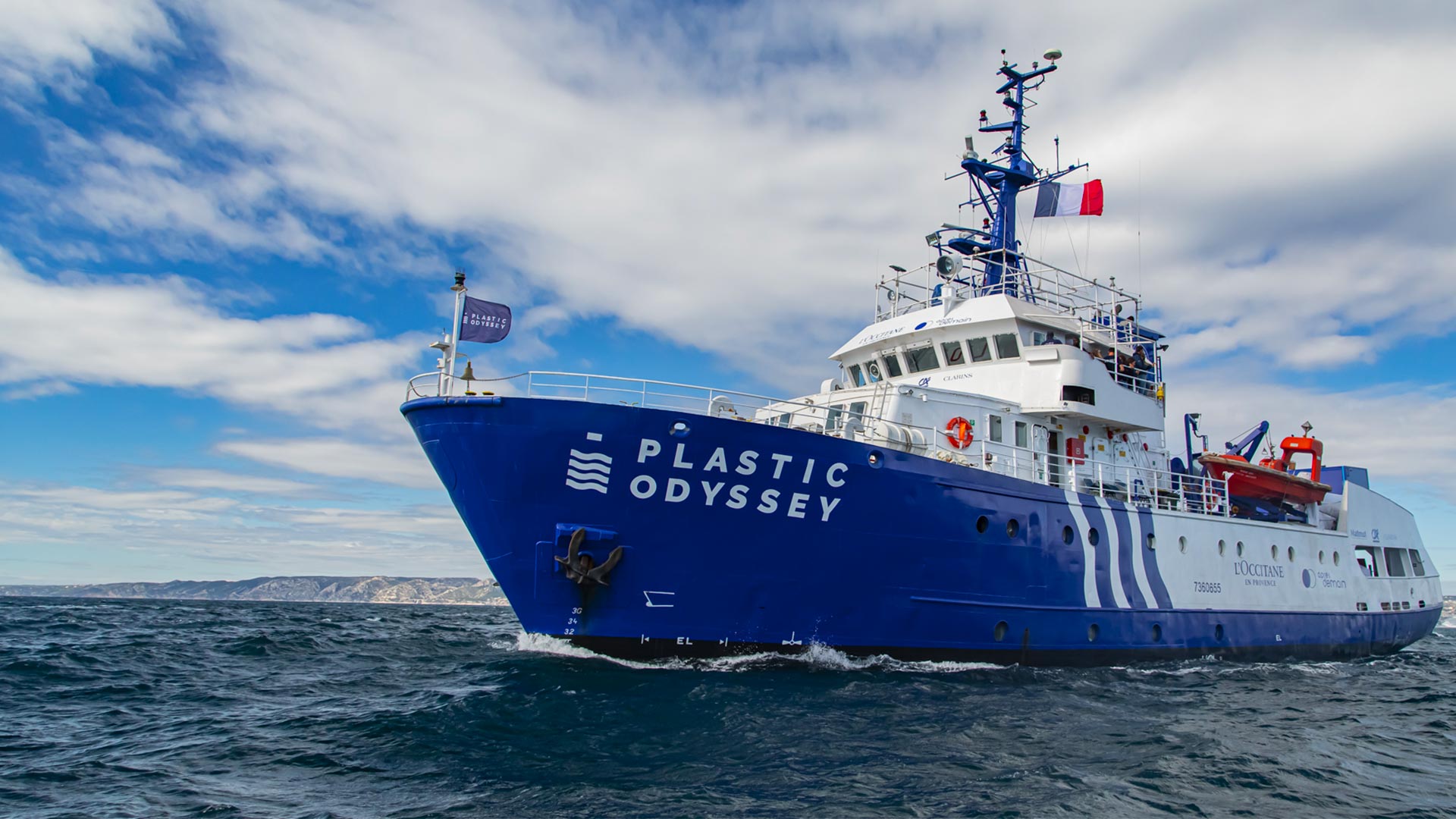High-integrity Plastic credits and the UN Plastics Treaty
Harnessing high-integrity plastic credits: a key to supporting the UN plastics treaty

Overview of the UN Plastics Treaty Negotiation
The 5th and last phase of negotiations for a UN Plastics Treaty has started this week in Busan, Korea. High-integrity plastic credits are a powerful way to fight plastic pollution worldwide. If used constructively, it could provide massive private funding to plastic waste collection and recycling projects in places where it is urgently required. This mechanism should be valued in the Treaty as a complementary approach to Extended Producer Responsibility (EPR) frameworks, enabling short-term action and initiating a “Just Transition” for the informal waste sector.
Plastic pollution: the size of the problem
Plastic production is set to triple by 2060 if no production cap is implemented in the last phase of negotiation for a UN Plastics Treaty taking place this week in Busan. Most of this production growth will occur in emerging countries that are lacking waste management infrastructures. While emerging markets are hotspots of plastic pollution, they only receive 6% of investments (US$ 11 billion out of the US$ 190 billion invested into plastics circularity since 2018). Africa received only 0.3% of total investments in 2023, despite 8% of plastic waste leaked to the ocean coming from the continent. Macroeconomic costs of stringent policy implementation are also higher in emerging countries: below 0.5% of GDP for OECD countries, and around 1.5% of GDP for Sub-Saharan African countries.
This is even more problematic because the true cost of plastics is eight times higher in emerging countries when accounting for its negative externalities. The current investment trajectory is too slow to meet targets to reduce plastic leakage into the environment by 90% by 2040. All funding sources must be mobilized to help emerging countries fighting the plastic pollution timebomb.
Plastic credits: a verifiable tool for impact investing at scale
One plastic credit is equal to one tone of plastic waste removed from the environment, or recycled. Plastic collection or recycling projects can get certified by well-known standards such as the Verra Plastic Waste Reduction Program or Ocean-Bound Plastic through an independent third-party audit. Plastic credits generated are then sold to companies willing to voluntary contribute to the fight against plastic pollution by enhancing plastic circularity. Plastic credits bring funding to impact projects, enhancing transparency and social justice from plastic waste management activities.
Not a license to pollute but an incentivization to act & contribute
If integrated into broader corporate plastic mitigation roadmaps, plastic credits could impact project finance at scale, while propelling corporate ambitious roadmaps. Under no circumstances should this prevent us from limiting production or turning a blind eye to value chain actions. This a complementary and necessary solution to anticipate the ticking plastic pollution timebomb.
Companies should adopt a contributory – but quantified and transparent – approach to engage into global plastic waste mitigation roadmaps encompassing plastic footprint measurement (Plastic Footprint Network, WBCSD), reduction targets (3R Initiative, Global Commitment), credit purchase (Verra, OBP) and reporting (Carbon Disclosure Project, CSRD).
Not all standards are equal
Various private-owned plastic credit standards have been developed in recent years. We should only support high-integrity plastic credits corresponding to “fully independent and transparent programs” identified as “Tier 1” in a recent World Bank report. Those credits follow key market principles that are essential to create an investment instrument beneficial to anyone. Here are some of the most important ones:
The necessity of blended finance to face the chicken & egg problem
The real power of voluntary environmental markets is to enable project finance. As an example, the maturity stage of the 15+ years old carbon market now allows for early-stage project finance. Removall is a leader of that type of investment, with 7 carbon projects financed globally. In most cases, 100% of investment needs are covered by carbon finance by anticipating the carbon credit potential of the project over the long-term. Even private banks are starting to invest in such projects, with IRR above industrial levels.
As the plastic credit market is still emerging, the demand for pre-purchase of credits by private companies is still low – which means that financing projects in the ramp-up phase remains difficult. We are currently facing a chicken & egg situation in which corporates are looking for up-and-running projects, while the latter require funding to become fully operational.
That is why blended finance mechanisms are essential to propel the plastic credit market. Few months ago, the World Bank has announced a US$ 100 million Plastic Waste Reduction-linked bond, similar to the “Rhino bond” issued in South Africa in 2022. With a risk hedged by their partner Citi Group, the first phase of the bond directly finances two projects Verra-certified in Ghana and Indonesia. This allows private investors to join in early stages by lowering the project risk. Such innovative finance mechanisms must be leveraged extensively in the years to come.
Plastic credits & EPR: joining the dots in the Treaty
Extended Producer Responsibility (EPR) frameworks can be an important policy approach to addressing plastic pollution if it is well-designed and implemented in a context-appropriate manner. It is strongly advocated in the Treaty, as the mechanism has brought some great successes in developed countries. Still there is a lack of locally appropriate examples that developing countries can learn from or replicate.
EPR implementation in emerging countries faces various challenges:
- Huge infrastructure funding deficit that governments are unable to bridge
- Resource-intensive for governments on the legal, regulatory, and administrative requirements
- Informal waste sector that first needs to be progressively formalized
- Lenghty implementation process, taking 10+ years in most cases (not to mention the risk of political corruption)
This is not about plastic credits vs. EPR frameworks, but rather about how to combine the two to get the most out of them. Links between compliance and voluntary environmental markets are worth studying. This has occurred frequently in the voluntary carbon market, with Article 6 of the Paris Agreement allowing countries to trade carbon credits as part of their Nationally Determined Contributions (NDCs), or through Article 147 of the French law ‘Climat & Résilience’ which obliges airline companies to offset their carbon emissions. Similar frameworks are under development for biodiversity credits, such as the Biodiversity Net Gain in the UK or the Nature Repair Market in Australia. Recognizing plastic credits as a means of complying with regulatory obligations could propel the market, avoiding losing decades of action.
Plastic credits under the Verra Plastic Waste Reduction Program have been designed as a temporary solution for EPR framework implementation in emerging countries. The crediting period is either 10 years or 7 years renewable twice (under updated conditions), for setting up the waste management system before handling it back to the government or including it into an established EPR scheme. Verra will publish a white paper dedicated to the topic in the coming weeks.
The need for a “Just Transition”
Social impacts for the waste picker community are at the heart of high-integrity plastic credit methodologies. Under the Verra Plastic Waste Reduction Program, various social safeguards are implemented:
- Consent: obtain free, prior and informed consent prior to project implementation
- Transparency: organize a Local Stakeholder Consultation for collecting feedback and establish suitable communication channels. Local communities should have the right to influence project design.
- Safety: provide PPE equipment and enhance safety trainings
- Labor rights: prohibit child labour, provide wages above national levels and ID cards
Informal waste sector in emerging countries always implies huge social challenges. High-integrity plastic credit certification is a way to progressively start its formalization, anticipating any government-led EPR mechanism. Additional standards such as the OBP Social+ allow for the certification of social co-benefits. Other independent frameworks provide detailed guidelines, such as the Harmonized Responsible Sourcing framework by the Circulate Initiative.
What would the ideal Plastics Treaty look like?
The 5th and last phase of negotiations for a UN Plastics Treaty has started this week in Busan, Korea. Chances of success are low: ambitious options mentioned in the draft Treaty last summer have been withdrawn in the shorter version “Non-paper 3” drafted by the Chair of Committee. Some key challenges are not yet resolved, such as limiting plastic production worldwide or agreeing on rules of procedures (consensus vs. vote), which threatens even the existence of the Treaty.
Still, there is place for hope. The Paris Agreement has been signed in the last phase of negotiations at COP21, and it has now become the main reference of climate action. This is what an ambitious Plastics Treaty could look like in an ideal world:
- Plastic production cap on a global scale
- Plastic disclosure frameworks for the private sector: plastic footprint, target-setting, mitigation actions & reporting
- International plastic pollution fee, channelling funds towards emerging countries through an international organization such as the Global Environmental Facility
- High-integrity plastic credits incentivized and established regulatory links with EPR in emerging countries.
Let’s be clear: this will take time. Even if the 5th round of negotiation comes to an agreement, the Treaty will still have to be approved by a Diplomatic Conference before entering the COP process. We are running out of time: with high-integrity plastic credits, we can start to act now.
Sources :
- wwf-brief-oeeg1-aug-2024—eng.pdf
- Insights into Global Plastics Circularity Investments
- WWF REPORT: Who pays for plastic pollution? | WWF
- Towards Ending Plastic Pollution
- Unlocking Financing to Combat the Plastics Crisis – Opportunities, Risks, and Recommendations for Plastic Credits
- World Bank’s New Outcome Bond Helps Communities Remove and Recycle Plastic Waste
- Verra at Fifth Session of Global Plastic Treaty Negotiations (INC-5) – Verra
- Executive Summary_Plastic Credits and Extended Producer Responsibility.indd
- giz2024-en-just-transition-report_UPDATE-3
- Harmonized Responsible Sourcing Framework for Recycled Plastics
- Systemiq-A_Living_Income_for_the_Informal_Waste_Sector_EN
Article written by :

Côme Falque
Project Manager - Innovative Environmental Assets

